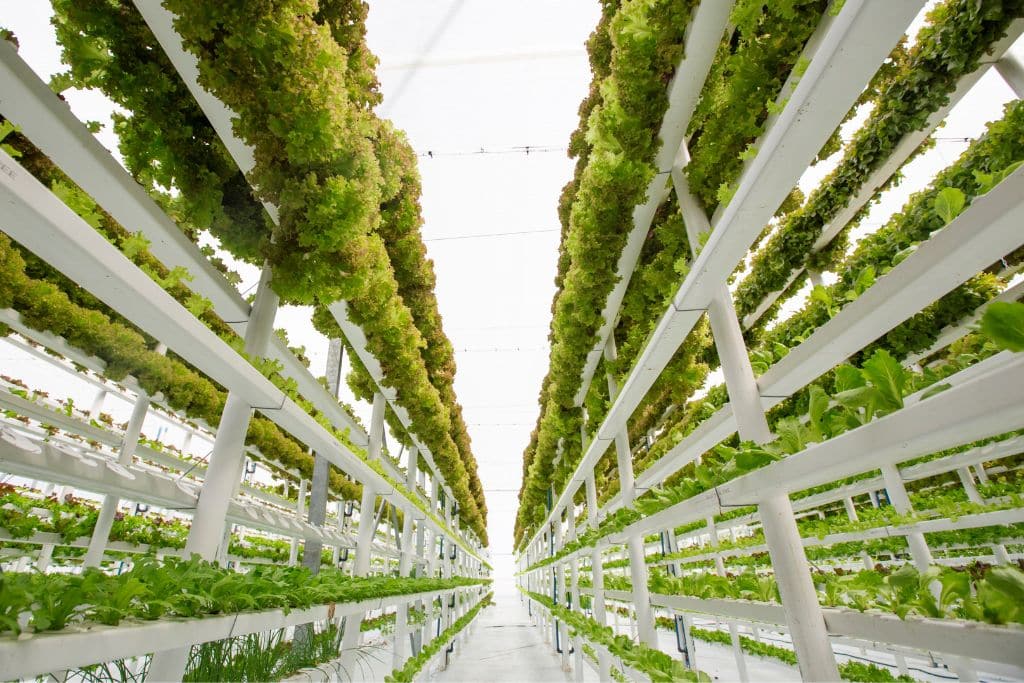Today’s global food system produces more than enough food to feed the world’s population. And yet a large proportion of the human family faces food insecurity, malnutrition, and hunger on a daily basis. This is due to deficiencies within the food system. However, it’s not all bad news. These deficiencies can be overcome through more sustainable practices, including minimising food waste, instituting smart farming practices, and engaging in vertical and hydroponic farming. The key to resolving the issues related to it, then, lies not in making the system more productive, but rather in making it more sustainable.
—
What Is Food Insecurity and Why Does It Matter?
The modern global food system has never been more productive than it is today, generating more than enough food every year to feed every single person on the planet. Despite this, it is estimated that as many as 828 million people still go hungry.
Indeed, food insecurity and malnutrition are persistent and pervasive problems in the modern world. Deficiencies in food systems are ubiquitous in both developing and developed economies, proving that hunger knows no boundaries.
At the heart of the problem of global hunger is not productive capacity. Rather, the challenge lies in deficiencies within the global food system. These have contributed to food insecurity worldwide because of the inherent unsustainability of legacy practices and processes. Fortunately, there are strategies that can be implemented today to make the food system more sustainable for tomorrow and for all the days that follow.
You might also like: Why We Should Care About Global Food Security
Food insecurity refers to problems both within the food system and in an individual’s immediate environment. These issues make it difficult or impossible for the person to meet their nutritional needs on a consistent basis.
As mentioned before, food insecurity is less a matter of production than an issue of optimising the use of the cultivated environment. Food insecurity also derives largely from failures within the system to use, store, and distribute food efficiently.
This issue has impacts far beyond the immediate threat of hunger. Chronic malnutrition, for instance, can lead to significant oral health problems that, in turn, often give rise to even more serious, and costly, diseases. Without proper nutrition, tooth failure and gum disease are common. Maintaining healthy teeth and gums, for example, is often a function of a thriving immune system, and proper nutrition is the cornerstone of robust immunity.
Preventing Food Waste
The factors contributing to food insecurity are varied and interconnected. Food waste is one of them. Roughly one-third of the food produced that is intended for human consumption every year – around 1.3 billion tons and valued at US$1 trillion – is wasted or lost. That’s enough food to feed approximately three billion people, significantly more than those facing hunger and malnutrition today.
It is possible, however, to resolve systemic issues such as those leading to food waste, for example through education on the issue of food waste and how to prevent it. Prevention measures would also involve the substitution of a linear food system with a circular one that prioritises the tracking and distribution of available food supplies to those who need them.
This way, all surplus food supplies can be more readily redistributed, ensuring that whatever is unused by one consumer makes its way onto the plate of another. The end result of the circular food economy is more nutrients in human bellies and less nutrient-dense foods rotting in garbage bins.
You might also like: 25 Shocking Facts About Food Waste
Optimising Food Production Processes
In addition to the issue of food waste, common practices for food production are largely unsustainable. Industrial agriculture, for instance, often leads to overproduction and, consequently, to the depletion of the soil. At the same time, large-scale farming practices also produce enormous amounts of greenhouse emissions.
Traditional agriculture has the largest carbon footprint of almost any industry and is a leading culprit in climate change. This means that the standard practices of large-scale farming are accelerating the very environmental conditions that are destroying crops and devastating once-fertile lands.
But, again, there is hope. The key is the institution of smart farming practices that harness the power of technology to institute more environmentally-friendly processes into food production.
This includes farming practices such as hydroponic and vertical farming that deploy smart sensors to continuously monitor growing conditions. Equipped with essential environmental data, farmers can tailor their practices to the specific and evolving needs of the crop. This ensures that water is not wasted and the specific nutrients are given exactly when and how they are needed.

The primary goal of vertical farming is to increase the amount of food produced per square metre. To achieve this, crops are grown in a tower-like living structure.
These processes minimise waste while ensuring that cultivation strategies are exactly suited to the growing environment, thus eliminating the need to overwork the soil. Likewise, hydroponic and vertical farming leverage the unique ecology of the space.
Where arable land is limited, vertical farming multiplies production capacities by expanding upward rather than outward. Where water is more readily available than soil, farmers create hydroponic pools for water-loving crops.
The outcome of these innovative and adaptive approaches is a food system that is both more sustainable and more localised. This means that healthy foods can be produced closer to the consumers who will buy them, cutting costs and making nutritious products more accessible to those who need them.
At the same time, by cutting transport distances or eliminating the need for shipping altogether, greenhouse gas emissions relating to food production will be dramatically slashed. This, in turn, can improve growing conditions over the long term, meaning that more people will have greater access to arable land worldwide.
You might also like: 3 Biggest Threats to Global Food Security


















